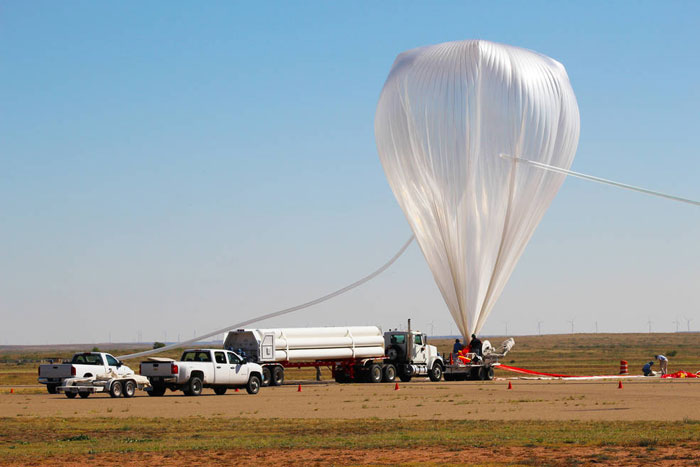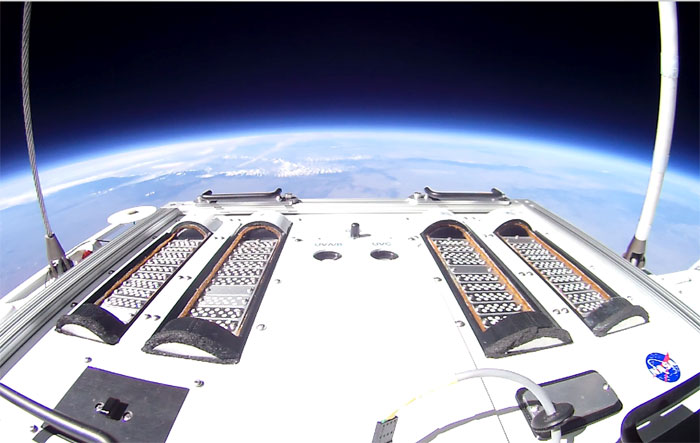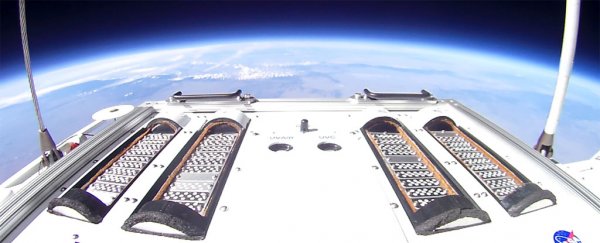As if space exploration weren't already hard enough, one of the critical jobs NASA and other space agencies have to manage is preventing the contamination of any alien worlds we visit, by making sure any microbial stowaways hidden on Earth-built spacecraft don't pose a danger to extraterrestrial life.
It's for this reason that the Mars rovers can't explore everywhere on the Red Planet, and why the Juno spacecraft will meet a fiery end far from any potential life on Europa.
"If we're sending viable biomass to Mars, we want to make sure we're not going to hit a spot where terrestrial contaminants can start to propagate and take over the environment," microbiologist David J. Smith from NASA's Ames Research Centre told The Atlantic.
Now a study led by Smith has assessed the survival prospects of microbes that manage to hail a ride as far as Earth's stratosphere, and while those prospects aren't necessarily great, concerns over Earth bacteria surviving in space environments certainly aren't misplaced.
To simulate the extremely cold and dry environment of Mars, the team launched samples of a particularly hardy strain of Bacillus pumilus bacteria called SAFR-032 to an altitude of 31 kilometres (19.3 miles) on a scientific research balloon.
 NASA/Christina Khodadad
NASA/Christina Khodadad
Some 40 million samples of the bacteria were loaded into cartridges on NASA's Exposing Microorganisms in the Stratosphere (E-MIST) balloon to see what chance SAFR-032 would have in a Martian-like environment without a protective atmosphere.
"We sort of had a nightmare scenario and an intentionally high concentration in order to better understand how the bacterial population would respond," Smith told Joshua Sokol at Nature.
In addition to the extreme weather conditions of the stratosphere, at that altitude lifeforms are exposed to fierce levels of cosmic radiation – and that proved to be the most damaging factor for SAFR-032.
After eight hours of exposure to the Sun's ultraviolet light at 31 kms (19.3 miles) high – comparable to the amount of UV rays you'd get on Mars – the vast majority of microbes were obliterated.
"When we got the samples back to the lab a couple of weeks later we saw that there was almost a complete kill," Smith told Shannon Stirone at The Atlantic. "99.9 percent of the entire population was destroyed."
In terms of safeguarding future mission to Mars – or knowing that previous landings, including the Mars rovers, haven't jeopardised potential organisms on the planet – it's being counted as a win.
"Our results predict that most terrestrial bacteria would be inactivated within the first [day] on Mars if contaminated spacecraft surfaces receive direct sunlight," says Smith.
"Let the rovers sunbathe [and] help keep Mars pristine."
But while UV light took care of most of the microbes, it didn't kill them all. Of the 40 million spores sent into the stratosphere, 267 survived.
SAFR-032 has the ability to enter a protective, dormant state – called an endospore – when they encounter physically stressful environments, and 267 of the bugs were able to be awakened from this state after their voyage to the stratosphere.
In some ways, this isn't completely surprising, given that SAFR-032 is known to be highly resistant to UV, and can survive in space (in the shade, at least) for long periods, lasting 18 months in one experiment outside the International Space Station (ISS).
But another concern is that while the E-MIST experiment was specifically intended to expose the bacteria to the Sun's rays, the nooks and crannies of rovers and other spacecraft could enable microbes in other circumstances to hide from UV light in all sorts of dark recesses.
 Bacteria samples in NASA's E-MIST balloon experiment. Credit: NASA
Bacteria samples in NASA's E-MIST balloon experiment. Credit: NASA
"They are not building these spacecraft for UV microbial death," astrobiologist John Rummel from the SETI Institute, who wasn't involved with the study, told Science.
Experiments with surfaces and structures that more closely resemble actual spacecraft would provide a better estimate of stowaway survival rates, even if they're "not the kind of configurations that microbial ecologists find easy to count," Rummel says.
But the most remarkable part of the findings is that the microbes that did survive the stratosphere showed a number of minor changes in their DNA when compared with control specimens kept on the ground.
It's too early to say how these changes came about, or whether they would influence gene expression, but the researchers acknowledge that it could have been something that influenced their survival in the stratosphere – and perhaps on places like Mars too.
Previous NASA research found that SAFR-032 samples that survived outside the ISS also underwent genetic changes – and their bacterial offspring became even more resistant to UV light.
"[W]hat's particularly interesting," Smith told The Atlantic, "is that those that were alive from the ISS experiment also ended up showing a resistance to antibiotics."
Solving how this all comes together will fall to future research, as the researchers still have a lot of questions.
But while UV light can clearly kill one super-tough Earth bug given enough exposure, it sure doesn't look to be a 100 percent solution just yet.
The findings are reported in Astrobiology.
